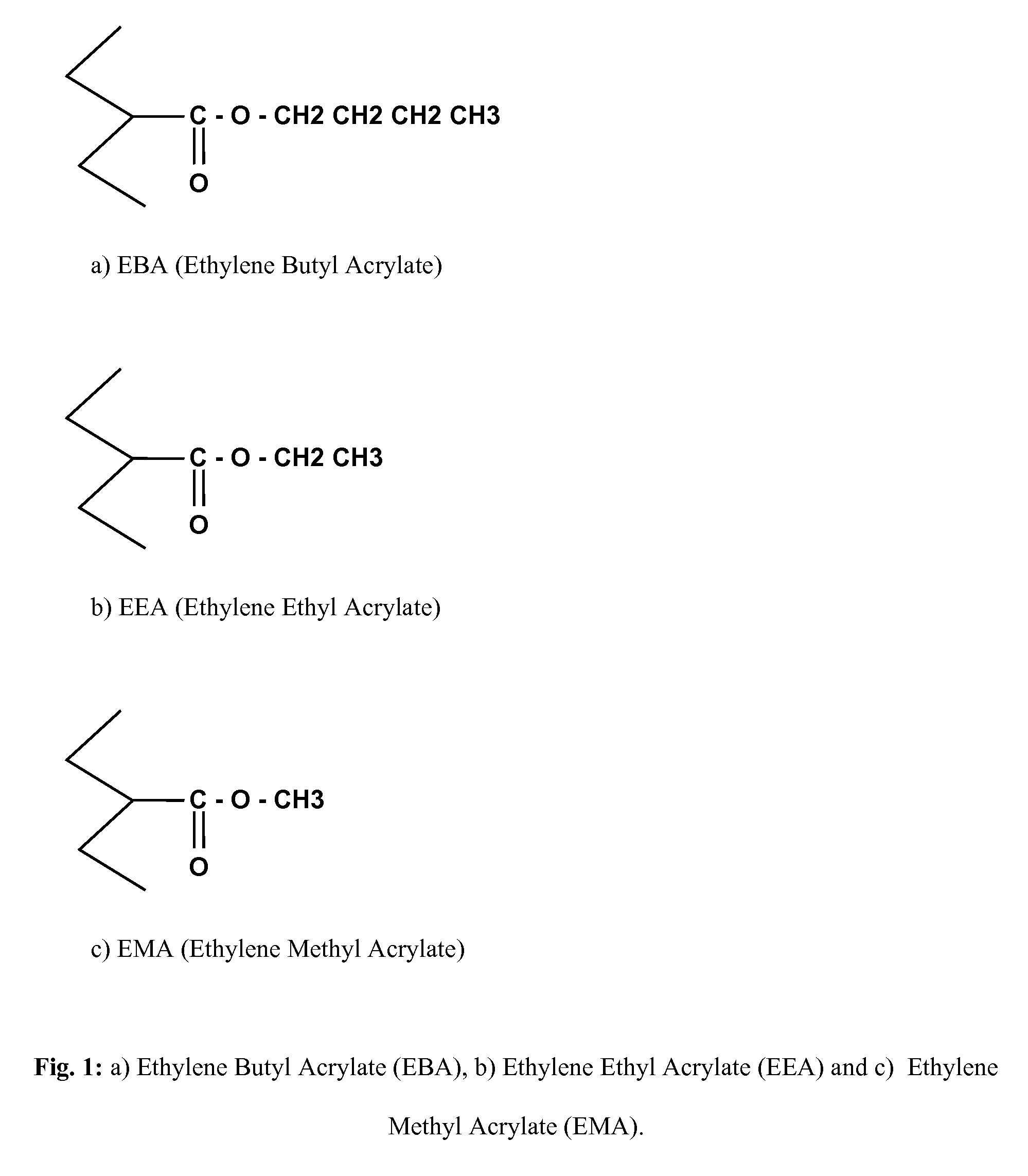Preparation and application of chain-extending concentrates for polyester foaming process
a technology of concentrates and polyester, applied in the field of preparation and application of concentrates for polyester foaming, can solve the problems of difficulty in producing such masterbatches, if not impossible, troublesome or even interrupted reactive foam extrusion production, etc., and achieve the effect of stable foaming
- Summary
- Abstract
- Description
- Claims
- Application Information
AI Technical Summary
Benefits of technology
Problems solved by technology
Method used
Image
Examples
example 1
[0047]46.5 weight parts of PET copolymer granules (I.V.=0.76 dl / g) were milled to powder having at least 80 wt % particles less than 200 μm and dried at 165° C. for 8 h. The PET powder was mixed with 12 weight parts PMDA and 0.15 weight parts Irganox B900 in a mixer.
[0048]41.35 weight parts of Elvaloy 1820 (DuPont) were first added to a 5000 cm3 Banbury mixer. After the ethylene-acrylate copolymer is softened at 40-50° C., the mixture of above powders was added to mixer for being mixed and blended with Elvaloy 1820 at 30-40 rpm for 4-7 minutes. The rotating speed of the mixer was adjusted to ensure a melt temperature between 160-170° C. The compound was fed to a roll mill heated at 80-100° C. and pressed to a thin sheet. The sheet was sliced to strips, followed by continuously feeding the mixture in form of strips into a single-screw extruder (φ45 mm / 30D). The mixture was extruded through a strand die. The strands were cooled down in a water bath, pelletized and dried immediately in...
example 2
[0056]The procedure of Example 1 was repeated with the difference that 2.5 weight parts of Irganox 1330 were added, 10 instead of 12 weight parts of PMDA and 40.85 instead of 41.35 weight parts of Elvaloy 1820 were used for the preparation process.
example 3
[0057]The procedure of Example 2 was repeated with the difference that 1.5 weight parts of 1,3 PBO (from Evonik) were added and 8.5 instead of 10 weight parts of PMDA were applied. After the PET powder was dried at 110° C. for at least 10 h instead 165° C. for 8 h, this powder was added into the Banbury mixer. A further difference is seen in the melt temperature in the Banbury mixer and the single-screw extruder. In Example 3, the Banbury mixer was run at a lower rotating speed than in Example 2 to have a melt temperature at 120-125° C. The extruder was set at the temperatures:
[0058]Barrel temperatures: 100-125° C.
[0059]Die temperature: 125° C.
PUM
| Property | Measurement | Unit |
|---|---|---|
| reaction temperature | aaaaa | aaaaa |
| weight percent | aaaaa | aaaaa |
| weight percent | aaaaa | aaaaa |
Abstract
Description
Claims
Application Information
 Login to View More
Login to View More - R&D
- Intellectual Property
- Life Sciences
- Materials
- Tech Scout
- Unparalleled Data Quality
- Higher Quality Content
- 60% Fewer Hallucinations
Browse by: Latest US Patents, China's latest patents, Technical Efficacy Thesaurus, Application Domain, Technology Topic, Popular Technical Reports.
© 2025 PatSnap. All rights reserved.Legal|Privacy policy|Modern Slavery Act Transparency Statement|Sitemap|About US| Contact US: help@patsnap.com


